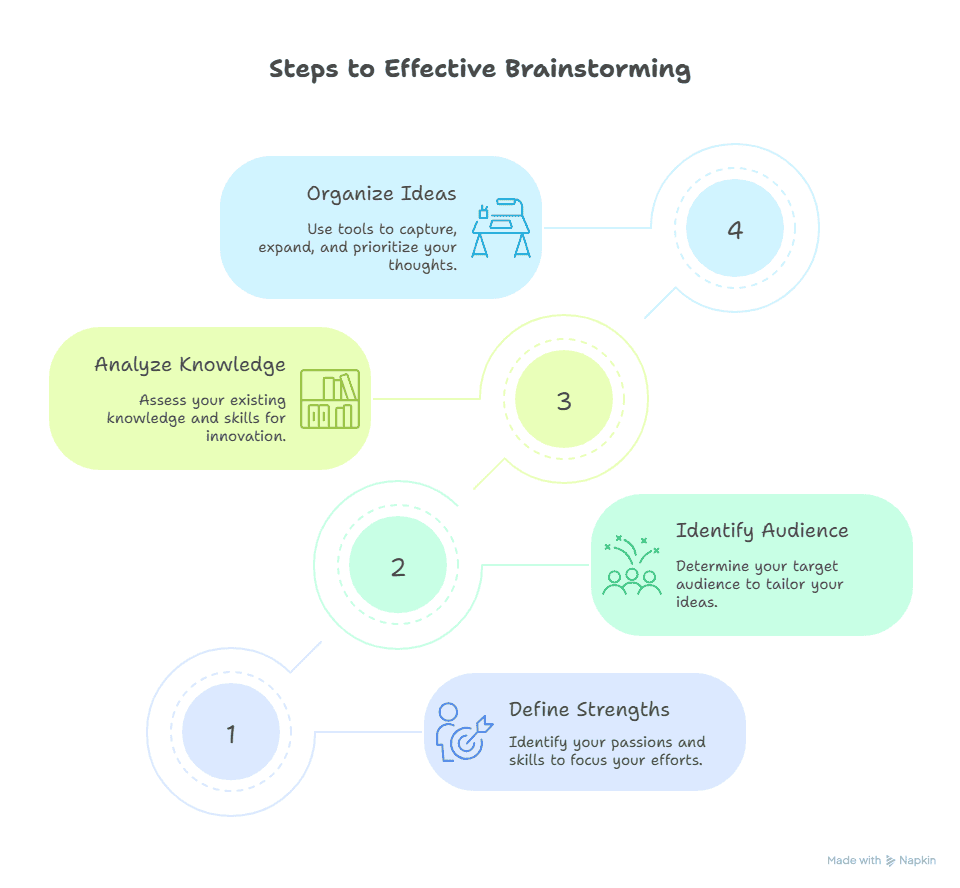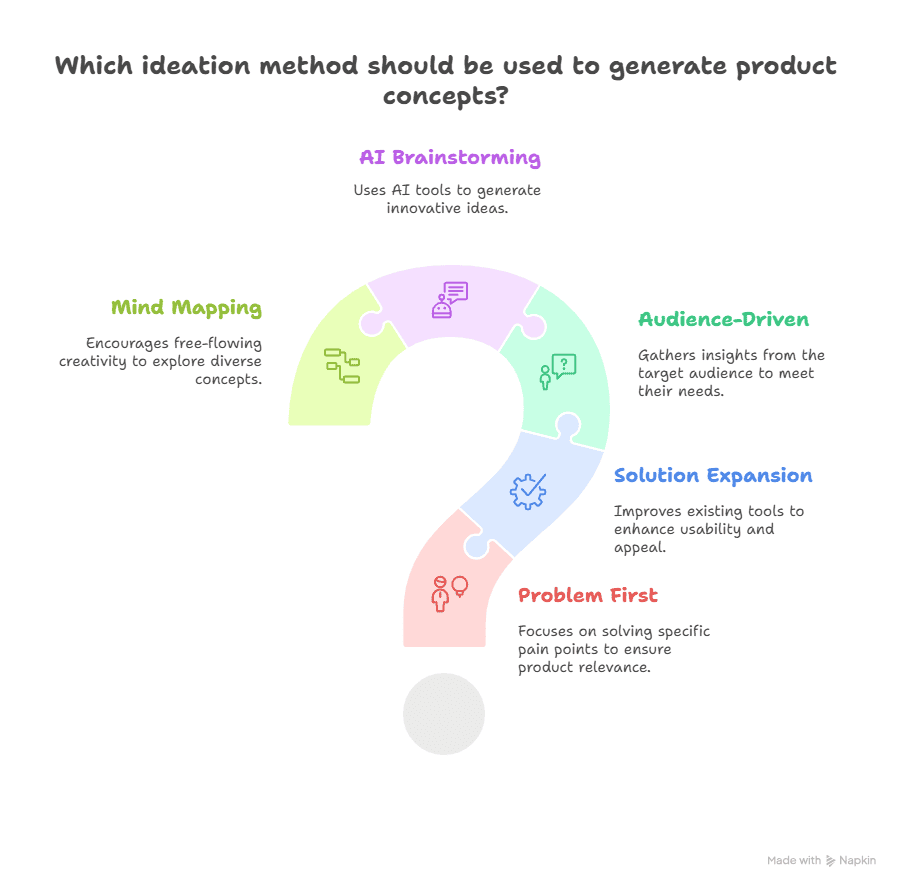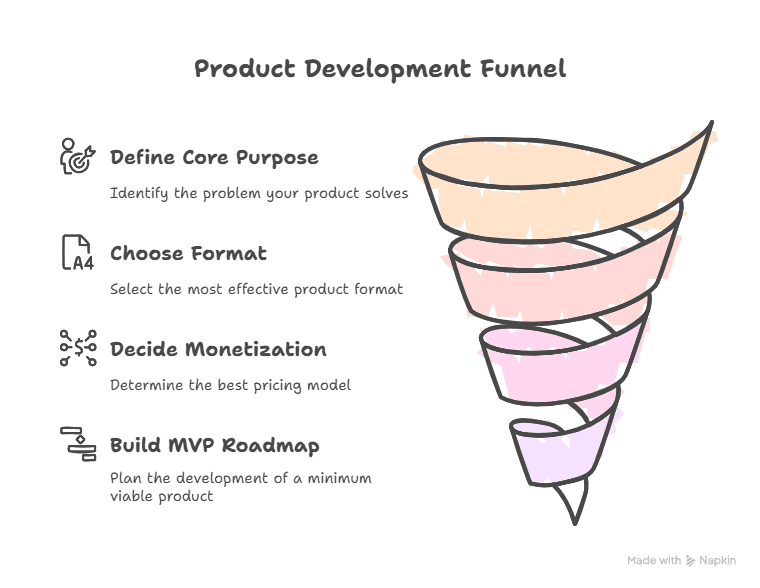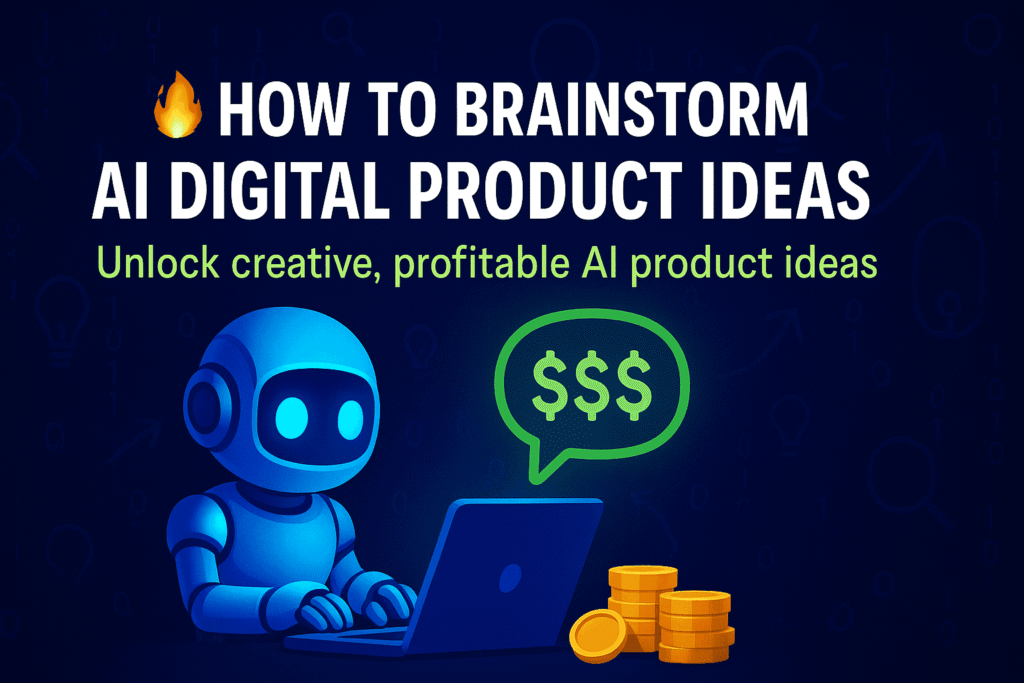Table of Contents
Love this post? Share it!
Introduction
Why AI Digital Products Are Booming in 2025
We’re living in an era where artificial intelligence isn’t just a buzzword—it’s a powerful engine fueling the next wave of digital innovation. In 2025, the AI market is exploding with possibilities, and digital products built around smart automation, personalization, and machine learning are leading the charge. From solopreneurs to startups, everyone’s exploring how to package their skills and insights into scalable AI-powered solutions. Why now? Because AI tools are more accessible than ever before, and consumers are actively searching for smarter, faster, and more efficient ways to solve everyday problems.
What used to take teams of developers and thousands of dollars to build can now be prototyped in a weekend. Platforms like ChatGPT, Claude, Midjourney, and dozens more are transforming how we create, market, and deliver digital experiences. Whether you’re developing a no-code SaaS tool or selling AI-generated templates, the time is ripe to ride this wave—and build something truly impactful.
Who This Guide Is For: Creators, Entrepreneurs, and Innovators
This guide is made for dreamers who are ready to take action.
Whether you’re:
- A creator looking to monetize your ideas,
- An entrepreneur aiming to solve real-world problems with AI,
- Or an innovator fascinated by the power of technology and eager to make your mark—
You’ll find this guide both practical and inspiring. No technical degree needed. Just a curious mind, a willingness to explore, and the drive to build something meaningful. If you’ve ever thought “I have an idea, but I don’t know where to start,” this is your starting line.
What You’ll Learn: A Clear Roadmap from Idea to Opportunity (Brainstorm)
This isn’t just another AI trends article.
This guide walks you through the step-by-step process of brainstorming, refining, and planning an AI-powered digital product—even if you’re starting from scratch. We’ll cover:
- What’s working in the AI space right now
- How to generate unique, in-demand ideas
- How to align those ideas with your skills and market needs
- Tools and tactics to organize and validate your concepts
- The types of products you can build (and sell!) in today’s market
Let’s dive in—and start turning your ideas into income.
Part 1: Foundation – Understanding the AI Landscape in 2025 (Brainstorm)
1.1 The State of AI in 2025: What’s Hot and What’s Next
In 2025, AI has evolved beyond simple chatbots and robotic process automation. We’re now seeing a surge in hyper-personalized tools, autonomous content generation, AI copilots, and real-time data analysis platforms. Startups are launching overnight, built entirely around AI features like image generation, voice synthesis, or intelligent decision-making. The market is hungry for tools that save time, reduce costs, and eliminate repetitive work.
Even more exciting? Consumers are now comfortable interacting with AI—and they expect digital products to offer AI-driven experiences. Whether it’s a course assistant that adapts to learning styles or a resume builder that analyzes job trends, the future is smart, intuitive, and AI-powered.
1.2 Popular AI Technologies You Can Leverage
To build successful digital products in 2025, it helps to know which technologies are shaping the scene. Here are a few to consider:
- Natural Language Processing (NLP) – the force behind ChatGPT and other content-creation tools
- Generative AI – for creating text, images, video, and code
- Machine Learning – for smart predictions, personalization, and automation
- Speech Recognition and Voice AI – for audio-based tools and digital assistants
- Computer Vision – powering tools for visual search, facial recognition, and AR experiences
You don’t need to become an engineer to use these. No-code tools and APIs make these technologies accessible to anyone with an idea.
1.3 Key Industries Ripe for Disruption
AI is weaving its way into every industry—but some sectors are especially open to innovation. Here’s where you might want to focus your brainstorming:
- Education – AI tutors, custom lesson planners, and automated grading
- Health & Wellness – habit trackers, mental health assistants, fitness coaching
- Finance – budgeting bots, smart invoice systems, investment dashboards
- E-commerce – personalized product recommendations, smart product description generators
- Content Creation & Marketing – social media planners, SEO content tools, video scripting AI
- Productivity & Business Operations – automation workflows, virtual project managers, idea organizers
Where there’s friction, there’s opportunity. Pay attention to pain points and inefficiencies—then ask, “Can AI make this better?”
1.4 Types of Digital Products Powered by AI
There’s no one-size-fits-all when it comes to AI digital products. Depending on your skills and audience, here are four powerful formats you can explore:
Tools & SaaS
These are lightweight, problem-solving apps that use AI to save time or automate tasks. Think AI résumé builders, GPT-based writing assistants, or calendar schedulers with smart recommendations. You can build simple versions using tools like Bubble, Glide, or Make.
Courses & Content
AI can help you create dynamic, interactive learning experiences—or even power the course itself. Build a course on “AI for Freelancers” or “How to Use Midjourney,” and supplement it with AI-generated templates, quizzes, and personalized feedback systems.
Templates & Automation Workflows
Busy people love plug-and-play solutions. Think Notion dashboards enhanced with AI prompts, Canva templates powered by brand analysis, or pre-built automations using Zapier + ChatGPT.
Chatbots & Assistants
AI assistants aren’t just for customer service anymore. You can build niche-specific bots—like a travel planner, wellness coach, or copywriting helper—that offer real-time, smart responses to user inputs.
Part 2: Preparation – Laying the Groundwork for Brainstorming

2.1 Define Your Strengths, Interests & Goals
Before you jump into idea generation, take a step back. What are you good at? What lights you up? What problems do you find yourself solving for others?
Your best ideas will come from where your passions intersect with purpose. This self-awareness gives you the confidence and direction to focus on what you can uniquely offer the market.
2.2 Identify Target Audience Segments
Who do you want to serve?
It’s tempting to create something “for everyone,” but the more specific your audience, the more valuable your product becomes. Whether it’s freelancers, real estate agents, YouTubers, or fitness coaches—narrow down your ideal user and explore their challenges.
Ask questions like:
- What tools are they already using?
- What tasks frustrate them?
- Where are they wasting time?
When you understand your audience, product ideas naturally flow.
2.3 Analyze Your Existing Knowledge Base & Skills
Chances are, you already have more to offer than you think. Make a quick inventory:
- What tools do you know well?
- What topics do people ask you about?
- What problems have you solved for yourself?
You don’t need to master AI—you need to combine what you already know with what AI can do. That’s where the real innovation happens.
2.4 Tools to Organize Your Brainstorming Process
Getting ideas is one thing. Keeping them organized is another. Here are some helpful tools to capture, expand, and prioritize your thoughts:
- Notion – great for idea databases, planning pages, and content boards
- Whimsical – a visual tool for mind mapping and flowcharts
- ChatGPT – your AI brainstorming partner for fast ideation
- Airtable or Trello – for managing and ranking potential product ideas
Start messy, then refine. Brainstorming isn’t about getting it perfect—it’s about getting it out.
Part 3: Discovery – Researching for Idea Validation
Before you build anything, you need to validate your ideas. Researching doesn’t have to be overwhelming—in fact, it can be fun and inspiring. The goal here is to see what’s trending, what people are paying for, and what gaps still exist.
3.1 Explore AI Trends Using Google Trends, Exploding Topics, and Product Hunt
These platforms are goldmines for spotting emerging ideas.
- Google Trends shows you the popularity of search queries over time. Try searching terms like “AI tutor,” “AI automation tool,” or “AI for freelancers.”
- Exploding Topics highlights fast-growing keywords and market trends before they go mainstream.
- Product Hunt is where early-stage products and tools are launched daily. Look at trending AI tools, their comments, and use cases to understand what users are excited about.
Tip: Look for rising demand, not oversaturated buzz.
3.2 Study Marketplaces like Gumroad, AppSumo, and Etsy for Inspiration
Marketplaces can give you direct insight into what people are already buying.
- On Gumroad, search for AI prompt packs, templates, or micro-SaaS tools. Check what’s selling well and read the customer reviews.
- AppSumo is a launchpad for software startups. Study AI tools being sold at discounts—note features, pricing models, and pain points.
- Even Etsy is worth a peek! You’ll find AI-generated journals, business planners, or Canva templates with automation elements.
Look for patterns in successful listings—what makes them stand out?
3.3 Analyze Competitor Products: What Works & What’s Missing?
Choose 3–5 products that are similar to what you’re thinking of building. Ask yourself:
- What problem are they solving?
- What features or benefits are people raving about?
- What complaints or suggestions are showing up in the reviews?
This will help you find the “white space”—the areas where you can improve or differentiate your offer.
3.4 Conduct Social Listening on Reddit, Twitter, TikTok & YouTube
Your audience is talking. You just need to tune in.
- On Reddit, visit subreddits like r/Entrepreneur, r/SideProject, or r/ChatGPT to see what tools people are building and what questions they’re asking.
- Twitter/X is great for trend-chasing—search hashtags like #AITools, #BuildInPublic, and #SaaS to get ideas in real time.
- TikTok has a goldmine of mini case studies. Watch “AI tool” compilations and user reviews to spot viral trends.
- YouTube creators often review tools in-depth, sharing what works—and what doesn’t.
Let your audience show you what they want next.
Part 4: Ideation – Generating Unique & Viable Product Concepts

Now that you’ve researched the landscape, it’s time to brainstorm creative, actionable ideas. Here are five proven methods:
4.1 The “Problem First” Method: Pain Points as Product Starters
Start with a frustration—either your own or your audience’s.
Examples:
- “I hate organizing content ideas.” → AI content calendar builder
- “I spend too much time rewriting resumes.” → AI résumé optimizer
Solving a real pain = instant product relevance.
4.2 The “Solution Expansion” Method: Improve an Existing AI Tool
Don’t reinvent the wheel. Find a product people love, then add your twist.
- Build a niche version for a specific audience (e.g., an AI writing tool just for therapists)
- Create add-ons, templates, or better UI for an existing open-source AI tool
- Offer training or onboarding services for complex AI tools
Sometimes, iteration is more powerful than invention.
4.3 The “Audience-Driven” Method: Let Your Niche Decide
Survey your followers, community, or email list. Ask them:
- “What task would you love to automate with AI?”
- “If an AI tool could do X for you, what would it be?”
Let your niche tell you what they need—you just build it.
4.4 Using AI Tools to Brainstorm AI Ideas (ChatGPT, Claude, Gemini)
Use AI to help you brainstorm AI!
Prompt examples:
- “Give me 10 digital product ideas combining AI and productivity.”
- “What’s a problem freelancers face that AI can solve?”
- “Suggest AI-powered products for Etsy sellers.”
AI tools can unlock new angles you haven’t thought of.
4.5 Mind Mapping & Brain Dump Techniques
Let your creativity loose. Open a blank page and write down:
- Tools you love
- Topics you’re passionate about
- Problems you’ve solved
- People you enjoy helping
Then connect the dots. A mind map helps visualize how your interests and skills intersect with market demand.
Part 5: Refinement – Narrowing Down Your Best Ideas
Not every idea is a winner. Let’s refine and filter.
5.1 MECE Filtering: Mutually Exclusive, Collectively Exhaustive Thinking
Group your ideas into clear, non-overlapping categories. Eliminate duplicates.
Make sure every angle is covered—without redundancy. This gives you a cleaner, focused shortlist.
5.2 Scoring Matrix: Profitability, Demand, Scalability, and Skill Fit
Score each idea 1–5 in categories like:
- Market demand
- Profit potential
- Your interest/skill level
- Scalability or ease of automation
The highest scoring ideas = your top candidates for action.
5.3 Test Your Idea with Prompt-Based Prototypes
Before you build, test your concept using ChatGPT or similar.
Example:
- Build a mini version of your product via prompt chains
- Use AI to simulate how it would work or interact with users
If it feels useful, you’re onto something.
5.4 Seek Early Feedback via Communities and AI-focused Forums
Share your ideas in:
- Twitter/X (build in public)
- Indie Hackers
- Reddit or Discord communities
- AI Facebook Groups
The goal: get fast, honest feedback to help shape your MVP.
Part 6: Planning – Preparing for Execution

You’ve validated your idea. Now it’s time to turn it into reality.
6.1 Define the Core Purpose of the Product
What ONE problem does your product solve?
Keep it focused and simple. This becomes your marketing hook, value prop, and guiding light.
6.2 Choose Your Format: Tool, Prompt Pack, Course, Service, or Template?
Based on your idea, decide the most effective format:
- SaaS tool → Use Bubble, Softr, or Glide
- Prompt pack → Sell on Gumroad
- Course → Use Teachable or Thinkific
- Templates → Sell on Etsy or Notion
- Service → Combine AI + human delivery
Choose what aligns best with your skills and audience.
6.3 Decide Monetization Models (One-time, Subscription, Freemium)
How will you earn from your product?
- One-time: Best for templates, prompt packs
- Subscription: Ideal for tools or ongoing content
- Freemium: Give value upfront, upsell later
Start simple. You can always evolve your pricing.
6.4 Build an MVP Roadmap: Minimum Viable Product in 7 Days
Don’t wait for perfection. Your first version should be:
- Quick to build
- Simple to explain
- Easy to test
Break it into daily sprints:
- Day 1–2: Setup + structure
- Day 3–5: Build core function
- Day 6: Test & tweak
- Day 7: Publish + promote
Done is better than perfect.
Part 7: Bonus Insights
7.1 Mistakes to Avoid When Brainstorming AI Product Ideas
- Chasing trends without research
- Overcomplicating your MVP
- Ignoring audience feedback
- Building for everyone, not someone
7.2 Case Studies: Successful 2025 AI Digital Product Launches
- A fitness coach who sold 500+ AI workout planners
- A student who built an AI résumé service for grads
- A solopreneur selling AI-generated real estate listings templates
Success doesn’t require a team—just a sharp idea and smart execution.
7.3 AI Tools That Help Build and Sell AI Products
- ChatGPT / Claude / Gemini – Ideation + writing
- Midjourney / DALL·E – Visuals + branding
- Bubble / Glide – No-code app building
- Gumroad / Lemon Squeezy – Selling + payments
- Notion / Airtable – Project management + delivery
7.4 What to Do When You’re Stuck: Breaking Creative Blocks
- Walk away and return with fresh eyes
- Try brainstorming with an AI
- Join an online community and share your roadblock
- Revisit your “why”—what problem are you passionate about solving?
Clarity often comes through action.
Conclusion
Recap: From Clarity to Creativity to Conversion
We’ve covered everything from identifying AI trends to refining your best product idea and building a launch-ready plan. With the right mindset and tools, you can go from “What should I build?” to “Here’s what I’m launching!”—and do it all on your own terms.
Why Now Is the Best Time to Create an AI Digital Product
AI is no longer the future. It’s now—and it’s democratized.
You don’t need to be a coder. You don’t need a massive budget.
All you need is a great idea, a willingness to learn, and the courage to start.
Your Next Step: Start Today, Even If It’s Imperfect
Imperfect action beats perfect hesitation every time.
Take what you’ve learned, pick one idea, and begin.
You’ll be amazed at what can happen in just one focused week.
FAQs
Q1: Can I brainstorm and validate an idea in one day?
Yes, with the right tools and research strategy, you can generate and test a basic idea in a few focused hours.
Q2: Can ChatGPT help with brainstorming?
Absolutely. Use prompts tailored to your niche—it’s like having a brainstorming buddy.
Q3: How do I make sure my idea isn’t already taken?
Research on Google, marketplaces, and forums. Even if it exists, you can niche down or offer a better version.
Q4: What are some no-code tools to launch AI-based products?
Top options include Bubble (apps), Gumroad (selling), Notion (templates), and ChatGPT (content/prompt creation).
Q5: What are the best niches for AI products in 2025?
Freelancing, education, e-commerce, content creation, productivity, and personal finance are all trending.
Q6: Can I use ChatGPT to generate actual product ideas?
Absolutely. Use prompts tailored to your niche or interests—ChatGPT can help you explore angles you haven’t thought of.
Q7: Can I brainstorm and validate an idea in one day?
Yes! Use tools like ChatGPT, Google Trends, and marketplaces to test quickly.
Q8: What’s the best way to brainstorm AI product ideas if I’m just starting out?
Start with real problems you or your audience face daily. Use tools like ChatGPT or Google Trends to brainstorm based on pain points and trending needs.
Q9: Can I use ChatGPT to help me brainstorm AI product features?
Absolutely. ChatGPT is great for rapid idea generation. You can brainstorm feature sets, user flows, or even content outlines for your AI product.
Q10: How often should I brainstorm new digital product ideas?
It’s good practice to brainstorm regularly—monthly or quarterly. The AI space evolves quickly, so staying creative helps you stay ahead.
Q11: What are some tools to help me brainstorm more effectively?
You can brainstorm with tools like MindMeister, Notion, ChatGPT, and Figma. They help organize, visualize, and validate your AI product ideas easily.

